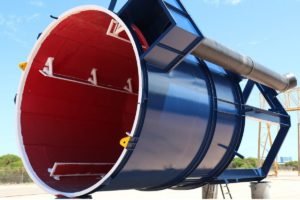Despite considerable progress in building rural infrastructure, some problems still remain. Among them is the scarcity of drinking water. Some places simply do not have enough water for rural households. Even where the availability of water is not an issue, the problem of lack of safe and pure drinking water still persists.
Unlike urban areas, rural areas suffer from lack of proper policy implementation. With lack of scrutiny and funds, there is little attention paid to the availability of safe drinking water in the remote areas of our country. There is a dire need of investment from RO plants manufacturers India. But it is also equally important to do this in a planned manner.
Challenges
Unfortunately, the challenges in setting up rural water purification plants are considerable. These have to be considered at the planning stages. The goal should be a sustained and self-dependent water management system.
1. Lack Of Awareness
Despite wide-spread push for the need of safe drinking water and the technology to ensure it, there is still very little awareness about it in the more remote areas of India. While most people recognise the rising levels of pollution, they have little idea on how it can be rectified. It is not just the lack of awareness about the technology. Many such areas are also clueless on how to implement a self-reliant system of water purification.
Solution: We need a nationwide policy of identifying such sector though zilla parishads and panchayats. Training seminars can be held at a regional level with various stakeholders like villages heads and Aanganwadi staff.
2. Proper Evaluation
Building an RO plant and running it is expensive. So, first we must determine if this expense is required. RO technology is not the only water purification technology. But it is one of the most effective in case of heavy pollutants. To ensure that the expense is justified, we have to therefore, ensure that the feed water cannot be treated with some other technology. RO technology is recommended when the water has high amount of dissolved salts and chemicals like fluoride and arsenic. It is not required when it is only biological contamination.
Solution: Before investing in an extensive infrastructure solution, we have to carefully evaluate the type of amount of effluent present in the water. Most RO plant manufactures India offer such surveys. This will help us in determining the type and extent of water purification technology required. For instance, if the water is heavily polluted with chemicals, an RO plant can be set up.
3. Finding Seed Money
The biggest problem often lies in finding the seed money. Setting up an RO plant involves quite an expense. A plant that is meant to service a community will require space, machinery and considerable investment. This is often too steep for many rural areas. A more thorough refining process requires an even bigger investment — something that is even harder to procure in rural communities.
Solution: The solution here is to find a corporate and government partnership. While the government has to do more in improving rural infrastructure, the private sector has also participated in pushing for development in recent years. Of the many plants that have come up in rural areas, some were set up by philanthropists and some under CSR. Other solutions lie in building large plants that can service more than one village.
4. Lack Of Revenue
Running an RO pant also requires a good budget. We need staff salaries, operation costs as well as maintenance costs. Once the RO plants manufacturers India has built the plant, we have to make sure it is self-sustaining with a proper source for revenue. Rural communities, often quite poor, are rarely able to carry such costs on their own.
Solution: Here again we look at public-private partnerships in running the plants. There are a number of partnerships models that are followed here. However, the bulk of the revenue has to come from the household serviced with fixed and fair tariffs.
5. Ground Support
This is the biggest challenge. To be completely self-sustainable, we need plants that are run by local communities and where they have a stake in the operational procedures and costs.
Solution: To ensure this, we need proper training of selected people who will later staff the plant. The RO plants manufacturer India contracted to build the plan should impart this basic training. By making the village committee a part of the operational structure we can also ensure that they have a stake in running the plant.


















